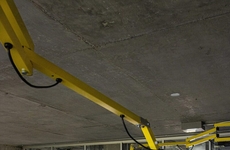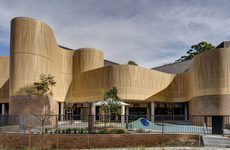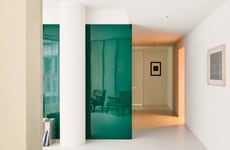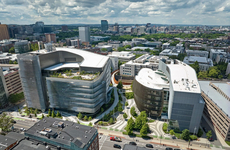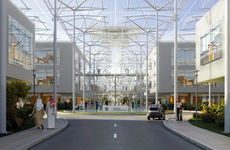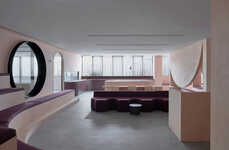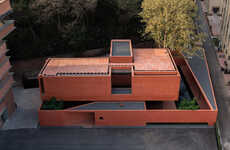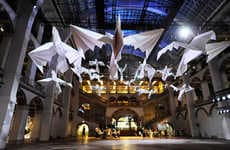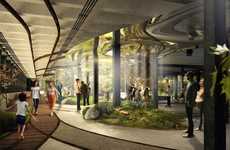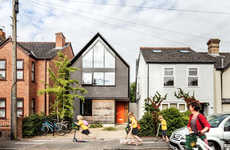
The PathWest Research Lab is Located in the Australian Nedlands
Jana Pijak — March 4, 2015 — Art & Design
References: blp.au & lanciatrendvisions
Located in the QEII Health Campus in Australia, PathWest Research Lab is a structure that is both complex and visually striking. The angular building boasts a patterned facade and a piercing element that acts as its focal point.
Beginning with a concrete shell, BLP architecture studio covered their facade with prefabricated elements that were adorned with an abstract and dotted pattern. These brick-like panels were inspired by red blood cells and were juxtaposed with a bright red and geometric door detail.
PathWest Research Lab's angular focal point can be seen from miles away and is representative of institution's blood test services. Once inside, this medical lab is clean and boasts a minimalist design. Crisp white walls are accented with cool color hints and graphic typography details that help visitors with way-finding.
Beginning with a concrete shell, BLP architecture studio covered their facade with prefabricated elements that were adorned with an abstract and dotted pattern. These brick-like panels were inspired by red blood cells and were juxtaposed with a bright red and geometric door detail.
PathWest Research Lab's angular focal point can be seen from miles away and is representative of institution's blood test services. Once inside, this medical lab is clean and boasts a minimalist design. Crisp white walls are accented with cool color hints and graphic typography details that help visitors with way-finding.
Trend Themes
1. Prefabricated Facades - The use of prefabricated elements in building facades offers opportunities for efficient construction and creative design options.
2. Geometric Door Details - Incorporating geometric door details into architectural designs can create visually striking focal points and enhance the overall aesthetic of the structure.
3. Minimalist Medical Labs - The trend towards minimalist design in medical labs creates clean and functional spaces that promote a sense of calm and facilitate efficient workflows.
Industry Implications
1. Architecture - The architecture industry can explore innovative ways to incorporate prefabricated elements into building designs, creating visually appealing and efficient structures.
2. Construction - The construction industry can benefit from the use of prefabricated elements, streamlining the building process and reducing construction time and costs.
3. Medical Research - The field of medical research can adopt minimalist design principles in labs, creating optimal environments for scientific work and improving productivity.
0.9
Score
Popularity
Activity
Freshness


